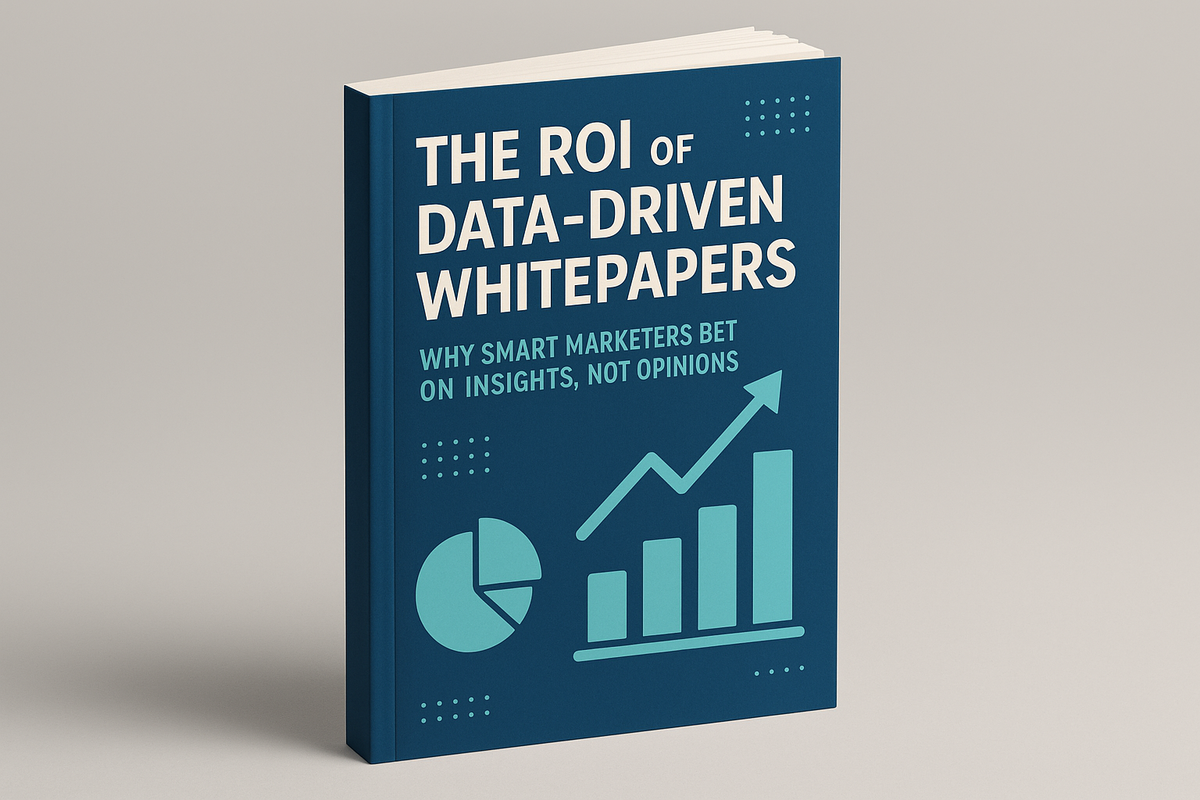In the noisy world of B2B marketing, every brand claims to be an expert. But today’s decision-makers aren’t persuaded by opinions — they’re persuaded by evidence. That’s why data-driven whitepapers have become the cornerstone of trust-based content marketing in 2025.
Unlike generic blogs or opinion pieces, whitepapers rooted in original research, analytics, and validated insights deliver tangible ROI. They don’t just generate leads — they generate qualified leads who are genuinely interested in your solution.
In this blog, we’ll explore why data-driven whitepapers are outperforming traditional formats and how marketers can leverage them to boost lead quality, credibility, and revenue.
Why Data Drives Trust in B2B Marketing
In B2B, trust equals influence. Executives and decision-makers make purchasing decisions based on facts, measurable outcomes, and expert validation. According to Demand Gen Report, 76% of B2B buyers rely on whitepapers when evaluating potential vendors — and data-backed ones perform even better.
Here’s why data-backed content wins:
-
Credibility: Data validates your claims, reducing skepticism.
-
Differentiation: Unique research helps you stand out in oversaturated markets.
-
Longevity: Insights-based whitepapers stay relevant longer than trend-based content.
The most effective whitepapers are not promotional — they are educational assets that solve real business problems through research and analysis.
Turning Data into Storytelling
While data provides credibility, storytelling gives it meaning. The best-performing whitepapers combine both — logic and emotion.
-
Step 1: Start with a hypothesis or market gap.
-
Step 2: Back it up with primary or secondary research (surveys, reports, internal analytics).
-
Step 3: Visualize findings with infographics or charts for clarity.
-
Step 4: Conclude with strategic takeaways that position your brand as a thought leader.
Example: A cybersecurity company that publishes a “2025 Threat Landscape Report” based on real data not only drives downloads but also earns industry recognition.
Measuring ROI of Data-Driven Whitepapers
1. Lead Quality and Engagement
High-quality whitepapers attract senior decision-makers who are actively researching solutions. Tracking metrics like job titles, engagement time, and asset completion rates provides a clear ROI snapshot.
2. Pipeline Influence
Whitepapers often play a pivotal role in multi-touch B2B buyer journeys. Even if they don’t convert immediately, they contribute to brand recall and pipeline acceleration over time.
3. Conversion Rate Optimization (CRO)
When your whitepaper is distributed via content syndication, it reaches niche audiences that fit your ICP. This targeted approach often yields 2x higher conversion rates compared to organic distribution alone.
How to Create High-ROI Data-Driven Whitepapers
1. Use Proprietary Data
Nothing establishes authority like your own numbers. If your business has internal analytics, customer surveys, or platform insights — use them to create a research-driven narrative.
2. Collaborate with Industry Experts
Co-authoring with analysts or thought leaders increases credibility and reach. Joint publications also open up cross-promotion opportunities.
3. Design for Readability
Even the best data loses impact if poorly presented. Visuals, summary boxes, and executive briefs make complex findings digestible for time-strapped professionals.
4. Distribute via Trusted Syndication Channels
Publishing isn’t enough — distribution is key. Partnering with content syndication platforms like Whitepapers Online ensures your report reaches verified B2B buyers actively seeking insights in your industry.
The Long-Term Value of Data-Driven Whitepapers
Whitepapers are not one-off campaigns; they are evergreen assets that keep driving value through multiple channels — social media, newsletters, webinars, and lead nurturing sequences.
When syndicated strategically, a single high-quality whitepaper can:
-
Generate leads for months (or even years).
-
Support webinars, eBooks, and case studies.
-
Enhance brand visibility across industry networks.
It’s an investment in sustained thought leadership, not just short-term marketing.
Conclusion
The B2B landscape is moving toward proof over promises. Marketers who rely on data-driven whitepapers aren’t just sharing content — they’re shaping conversations and influencing industries.
By grounding insights in data and syndicating them through trusted channels, brands can achieve higher engagement, stronger trust, and measurable ROI.
CTA: “Ready to transform your insights into high-converting whitepapers? Partner with Whitepapers Online to distribute your content to verified decision-makers and accelerate your B2B pipeline.”

